Islet neogenesis associated protein (INGAP) protects pancreatic β cells from IL-1β and IFNγ-induced apoptosis
- PMID: 33731692
- PMCID: PMC7969959
- DOI: 10.1038/s41420-021-00441-z
Islet neogenesis associated protein (INGAP) protects pancreatic β cells from IL-1β and IFNγ-induced apoptosis
Abstract
The goal of this study was to determine whether recombinant Islet NeoGenesis Associated Protein (rINGAP) and its active core, a pentadecapeptide INGAP104-118 (Ingap-p), protect β cells against cytokine-induced death. INGAP has been shown to induce islet neogenesis in diabetic animals, to stimulate β-cell proliferation and differentiation, and to improve islet survival and function. Importantly, Ingap-p has shown promising results in clinical trials for diabetes (phase I/II). However, the full potential of INGAP and its mechanisms of action remain poorly understood. Using rat insulinoma cells RINm5F and INS-1 treated with interleukin-1β (IL-1β) and interferon-gamma (IFN-γ), we demonstrate here that both rINGAP and Ingap-p inhibit apoptosis, Caspase-3 activation, inducible nitric oxide synthase (iNOS) expression and nitric oxide (NO) production, and explore the related signaling pathways. As expected, IL-1β induced nuclear factor kappa B (NF-κB), p38, and JNK signaling, whereas interferon-gamma (IFN-γ) activated the JAK2/STAT1 pathway and potentiated the IL-1β effects. Both rINGAP and Ingap-p decreased phosphorylation of IKKα/β, IkBα, and p65, although p65 nuclear translocation was not inhibited. rINGAP, used for further analysis, also inhibited STAT3, p38, and JNK activation. Interestingly, all inhibitory effects of rINGAP were observed for the cytokine cocktail, not IL-1β alone, and were roughly equal to reversing the potentiating effects of INFγ. Furthermore, rINGAP had no effect on IL-1β/NF-κB-induced gene expression (e.g., Ccl2, Sod2) but downregulated several IFNγ-stimulated (Irf1, Socs1, Socs3) or IFNγ-potentiated (Nos2) genes. This, however, was observed again only for the cytokine cocktail, not IFNγ alone, and rINGAP did not inhibit the IFNγ-induced JAK2/STAT1 activation. Together, these intriguing results suggest that INGAP does not target either IL-1β or IFNγ individually but rather inhibits the signaling crosstalk between the two, the exact mechanism of which remains to be investigated. In summary, our study characterizes the anti-inflammatory effects of INGAP, both protein and peptide, and suggests a new therapeutic utility for INGAP in the treatment of diabetes.
Conflict of interest statement
The authors declare no competing interests.
Figures
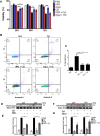
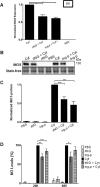
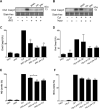
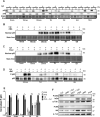
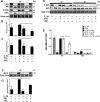
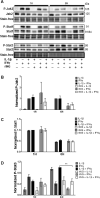

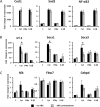
Similar articles
-
Mechanisms of action of islet neogenesis-associated protein: comparison of the full-length recombinant protein and a bioactive peptide.Am J Physiol Endocrinol Metab. 2012 Oct 1;303(7):E917-27. doi: 10.1152/ajpendo.00670.2011. Epub 2012 Jul 31. Am J Physiol Endocrinol Metab. 2012. PMID: 22850686 Free PMC article.
-
Islet Neogenesis Associated Protein (INGAP) induces the differentiation of an adult human pancreatic ductal cell line into insulin-expressing cells through stepwise activation of key transcription factors for embryonic beta cell development.Differentiation. 2015 Nov-Dec;90(4-5):77-90. doi: 10.1016/j.diff.2015.10.008. Epub 2015 Nov 11. Differentiation. 2015. PMID: 26558987
-
Suppressor of cytokine signaling 1 protects rat pancreatic islets from cytokine-induced apoptosis through Janus kinase/signal transducers and activators of transcription pathway.Chin Med J (Engl). 2013 Nov;126(21):4048-53. Chin Med J (Engl). 2013. PMID: 24229672
-
The role of islet neogenesis-associated protein (INGAP) in islet neogenesis.Cell Biochem Biophys. 2007;48(2-3):127-37. doi: 10.1007/s12013-007-0028-3. Cell Biochem Biophys. 2007. PMID: 17709882 Review.
-
Identification of Small Molecule Inhibitors that Suppress Cytokine-Induced Apoptosis in Human Pancreatic Islet Cells.2010 Oct 29 [updated 2011 May 26]. In: Probe Reports from the NIH Molecular Libraries Program [Internet]. Bethesda (MD): National Center for Biotechnology Information (US); 2010–. 2010 Oct 29 [updated 2011 May 26]. In: Probe Reports from the NIH Molecular Libraries Program [Internet]. Bethesda (MD): National Center for Biotechnology Information (US); 2010–. PMID: 22049578 Free Books & Documents. Review.
Cited by
-
INGAP-Peptide Variants as a Novel Therapy for Type 1 Diabetes: Effect on Human Islet Insulin Secretion and Gene Expression.Pharmaceutics. 2022 Aug 31;14(9):1833. doi: 10.3390/pharmaceutics14091833. Pharmaceutics. 2022. PMID: 36145580 Free PMC article.
-
Hyperglycemic Conditions Promote Rac1-Mediated Serine536 Phosphorylation of p65 Subunit of NFκB (RelA) in Pancreatic Beta Cells.Cell Physiol Biochem. 2022 Aug 19;56(4):367-381. doi: 10.33594/000000557. Cell Physiol Biochem. 2022. PMID: 35981264 Free PMC article.
-
A Supportive Role of Mesenchymal Stem Cells on Insulin-Producing Langerhans Islets with a Specific Emphasis on The Secretome.Biomedicines. 2023 Sep 18;11(9):2558. doi: 10.3390/biomedicines11092558. Biomedicines. 2023. PMID: 37761001 Free PMC article. Review.
-
Characterization of MSCs expressing islet neogenesis associated protein (INGAP): INGAP secretion and cell survival in vitro and in vivo.Heliyon. 2024 Jul 31;10(15):e35372. doi: 10.1016/j.heliyon.2024.e35372. eCollection 2024 Aug 15. Heliyon. 2024. PMID: 39170459 Free PMC article.
-
Transcriptional signature of islet neogenesis-associated protein peptide-treated rat pancreatic islets reveals induction of novel long non-coding RNAs.Front Endocrinol (Lausanne). 2023 Sep 29;14:1226615. doi: 10.3389/fendo.2023.1226615. eCollection 2023. Front Endocrinol (Lausanne). 2023. PMID: 37842306 Free PMC article.
References
LinkOut - more resources
Full Text Sources
Other Literature Sources
Molecular Biology Databases
Research Materials
Miscellaneous

